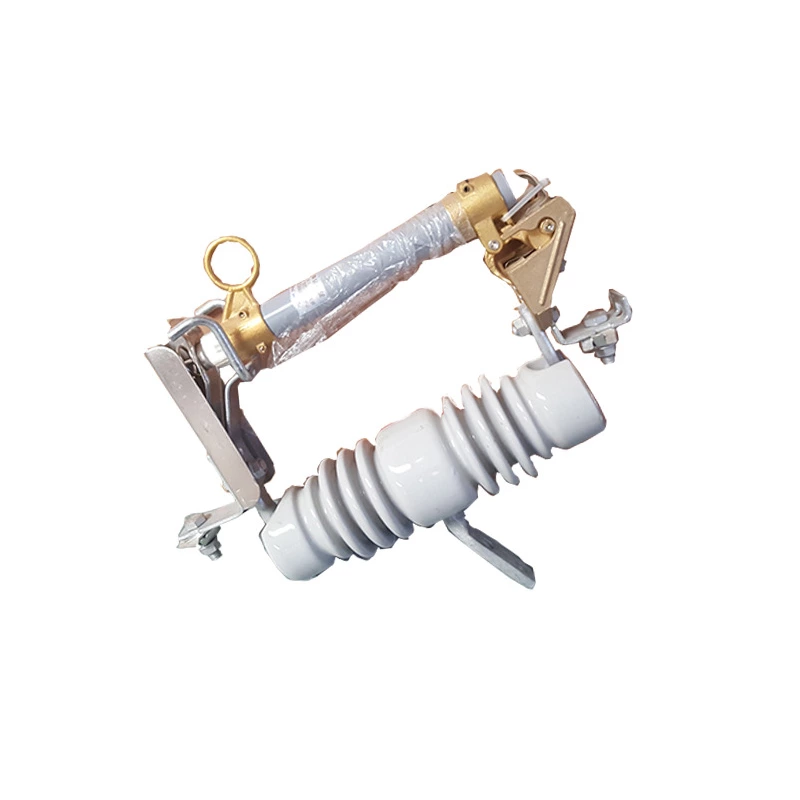Technical Specification And Practice Analysis Of Power-off Operation Of Drop-out Fuse
High Voltage Fuse As an important overload and short-circuit protection device in the 10kV distribution network, the standardization of its operation process directly affects the safety of power system operation and the personal safety of operators. This article takes Enbima as an example to conduct a professional analysis of the power-off sequence of drop-out fuses and explains the technical points of standardized operation procedures.
1. The physical characteristics of power-off operation
... According to the arc energy formula E=U²t/(2L), the arc energy when the middle phase is disconnected is only 33% of that of the side phase, which determines that a reasonable opening sequence can effectively reduce the operational risk.
2. Standardized power-off operation process
Operation preparation phase
Testing and confirming electricity: Use a 10kV tester to test three-phase electricity to ensure that the line is energized.
Test the tool to verify the mechanical strength of the insulating operating rod and whether the effective insulation length reaches 1.5 meters.
Position selection: The operator should stand below the fuse side, keeping a 75° angle with the vertical direction
... (1) Intermediate phase (B phase) disconnection Use the insulating rod to hook the lower contact of the fuse tube, slowly pull it towards the operator for about 15° and then quickly disconnect it. The arc energy is small at this stage, which can avoid phase-to-phase short circuit.
(2) Disconnection of the leeward phase: Select the leeward phase (usually phase C) as the second disconnect phase according to the on-site wind direction. During the operation, the movement trajectory of the melting tube must be kept at a 45° angle to the ground to ensure that the melting tube can fall smoothly.
(3) Disconnection of the windward phase (phase A): Finally disconnect the windward phase and use natural wind force to accelerate the arc extinction. The disconnection speed should be controlled during operation to avoid mechanical collision when the melting tube falls.
3. Key control points
Arc control technology
Arc control technology
The opening speed is controlled in the range of 0.6-0.8m/s to ensure that the arc is extinguished at the first zero crossing. The operating lever movement trajectory should remain straight to avoid lateral swinging that may reduce the dielectric strength of the contact gap.
Mechanical matching requirements
The drop stroke of the melting tube should meet the electrical isolation distance of ≥200mm. After operation, check the hanging position of the melting tube and confirm that the lower contact buckle is completely out of the bracket.
Special working condition processing
(1) Operation in windy weather: disconnect the phase on the upwind side first, and use wind pressure to assist in arc extinguishing
(2) Install fuses at an angle: adjust the operation sequence according to the principle of "low first, high later"
(3) Load switch parallel system: disconnect the phase on the upwind side first Operate the fuse after turning on the load switch
4. Analysis of typical incorrect operations
Reverse operation risk
Disconnecting the side phase first may generate a 10kV phase-to-phase voltage (17.32kV), causing the arc energy to increase by 300%, and there is a risk of causing a phase-to-phase short circuit.
Incorrect operation causes the system to generate 11.5% negative sequence voltage component during single-phase operation, which may cause overheating of the distribution transformer winding.
... ... 5. Technology development prospects
In the process of smart distribution network construction, the new magnetically controlled fuse has the function of electric remote control tripping, and its tripping time can be controlled within 3 milliseconds. However, traditional drop-out fuses will still exist for a long time in rural power grid transformation, and standardizing manual operation procedures is still an important issue to ensure power supply safety.
VI. Conclusion
The standardized power-off operation sequence is a basic technical measure to ensure the safety of distribution network. Enbima operators fully understand the principle of electromagnetic-mechanical combined action, strictly implement the operating procedures of "first the middle and then the two sides", and make dynamic adjustments based on the on-site environment to ensure the safe and stable operation of the power system.

